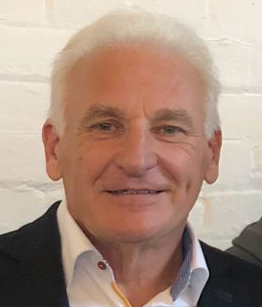Although the number of terrorist attacks was in decline from 2015 to 2017, both attacks and fatalities remain at historically high levels. In 2019 alone, there has been at least 659 reported terror-related incidents to date – predominantly across Africa and the Middle East, where attacks are an almost daily occurrence, writes Frank Baldwin, pictured, CEO of the security scanning product company 2X Systems.
Since the 9/11 attacks in 2001 and the subsequent ‘War on Terror’, these regions have experienced increased threat levels. 2017 saw 17,531 terrorism fatalities in these two regions combined – just over 66pc of the worldwide total – for example.
Evolving targets
The majority of terrorist groups almost exclusively choose to strike soft targets in order to instil fear as well as inflict casualties. But while security measures have been ramped up in many places across these regions to prevent terrorist attacks on high-profile ‘hard targets’ such as government buildings and military bases, civilian sites where unarmed people congregate in large numbers are still left exposed.
Civilian sites such as hotels, markets, shopping centres, hospitals, places of worship and schools have all been subjected to assaults in recent years. In January 2019, 21 people were killed when a group of gunmen stormed the luxury DusitD2 hotel complex in Nairobi, Kenya. While two were killed and 25 others injured in a car bomb blast outside a public market in the town of Al-Qaim, Iraq. A car bombing at a shopping centre in the city of Mogadishu, Somalia also left 11 people dead and 10 others injured on the 4th February 2019.
However, although greater importance should be placed on securing these vulnerable targets, the threat to hard targets such as airports, military checkpoints and embassies should not be overlooked. On the 21st January 2019, 126 security personnel were reportedly killed and around 70 others injured when the Taliban attacked a military checkpoint in Maidan Shar, Afghanistan. The assault began when an attacker rammed a vehicle full of explosives into the compound. Proving that, despite being highly defended with restricted access, these types of places are still prime targets for attack – particularly as terrorists become bolder, showing little regard for security measures.
As these threats draw in, it is vital to remain vigilant and put greater protective measures in place to secure both vulnerable soft targets and highly valuable hard targets.
Of course, terrorist attacks are not restricted to Africa and the Middle East by any means. Terrorism is a real global threat – and while some regions are worse affected than others, it can be difficult to predict where the next attack will occur. The recent New Zealand terror attack, in particular, serves as a stark reminder that terrorists can strike anywhere. 50 people were killed, and 50 others wounded, when a gunman opened fire on worshipers attending prayer at Al Noor Mosque in Christchurch – making it the deadliest attack in the nation’s history.
As a result of the attack, security patrols have stepped up at mosques across the world (including in the UK) to provide reassurance and protection. Met Chief Superintendent Nick Aldworth, who leads the government’s counter-terrorism strategy, said: “There’s no doubt in my mind that, having seen what I’ve seen here, this is something that we within counter-terrorism should be responding to in the UK and ensuring our current plans and thinking are correct”. Which bodes the question, are current security measures enough to stop these kinds of attacks?
Rapidly deployable, mobile solutions
Although advanced security measures are being put in place around the world, there is still one key problem: they are often set up too close to the target, rendering them virtually useless should an attack occur. In order to keep both soft and hard targets secure, the threat needs to be moved as far away as possible. This involves setting up a secure perimeter a safe distance away from the potential target – helping to limit damage and the number of casualties in the event of an attack.
However, it can be difficult to predict what the next target will be. As such, mobile security solutions are vital when it comes to staying one step ahead. 2X Systems has developed a rapidly deployable security screening system which provides top-down imaging of vehicles to help detect threats, drugs, explosives, weapons, contraband and people trafficking. Visit www.2xsystems.com.










